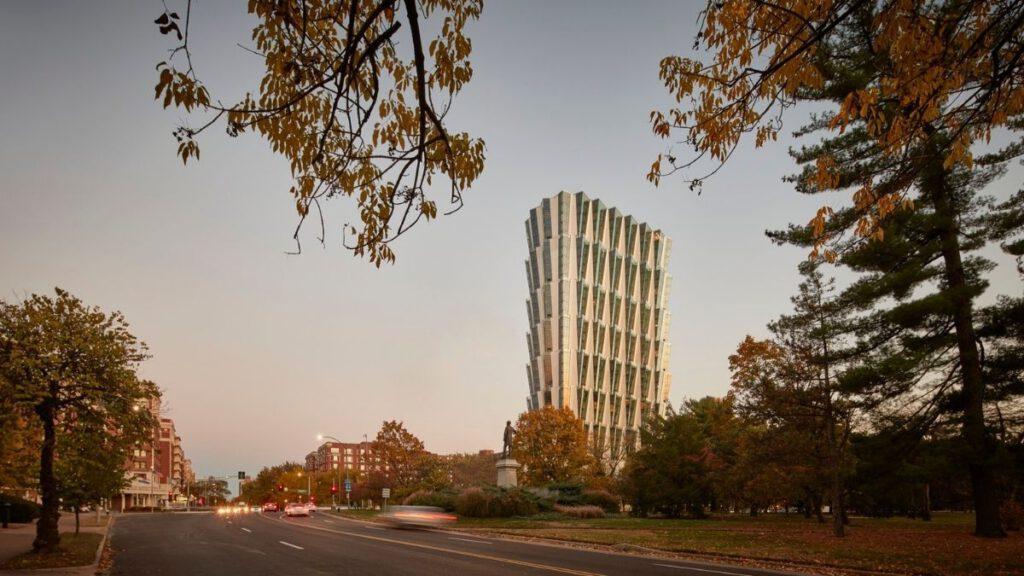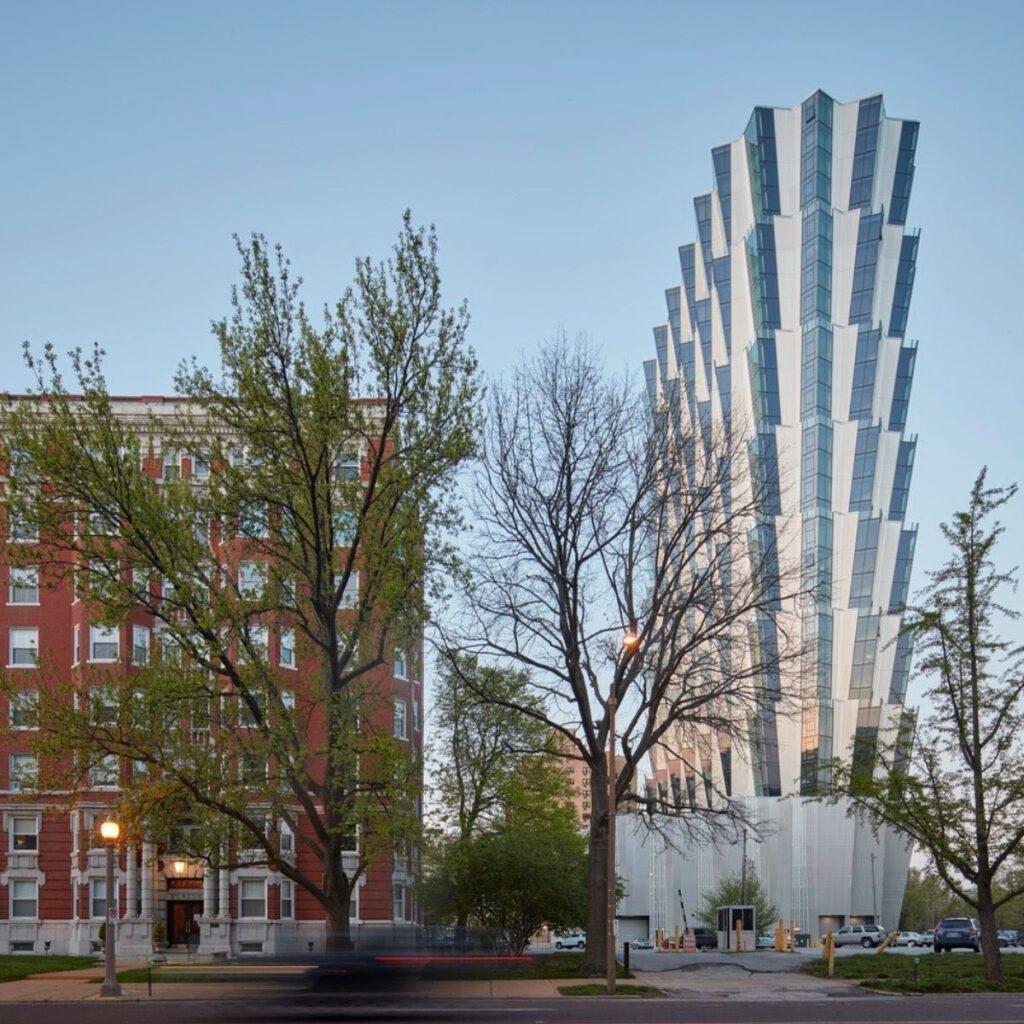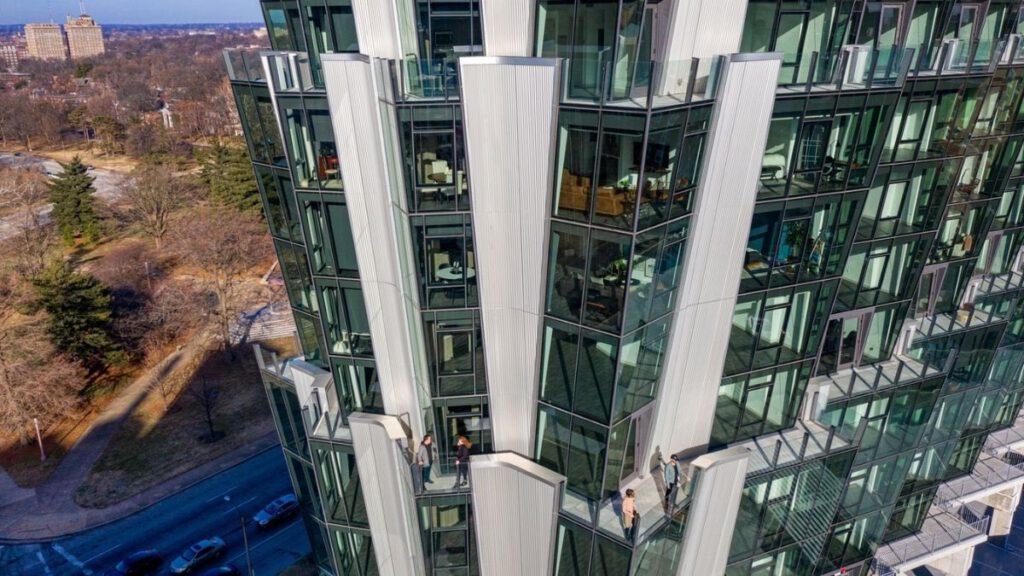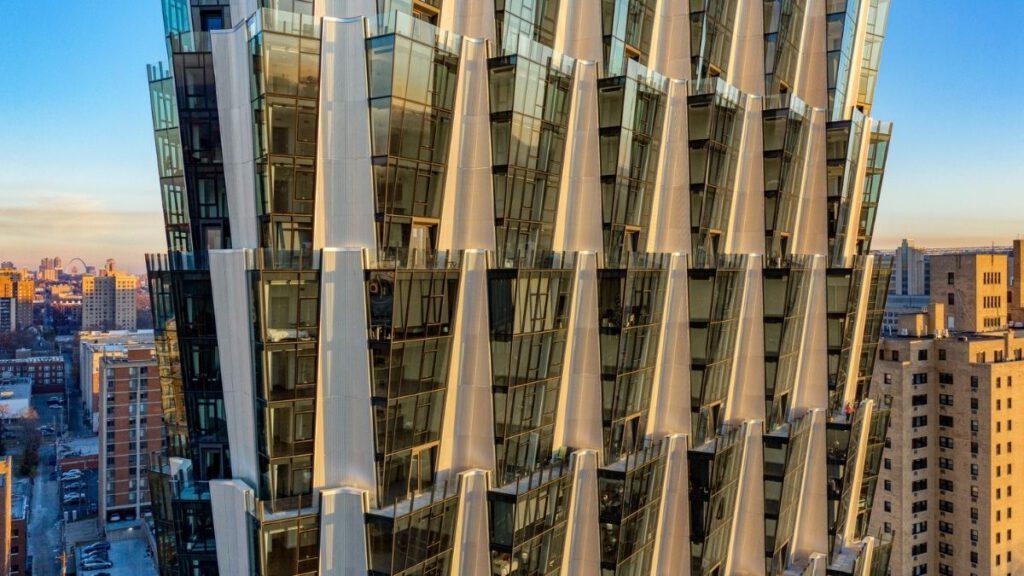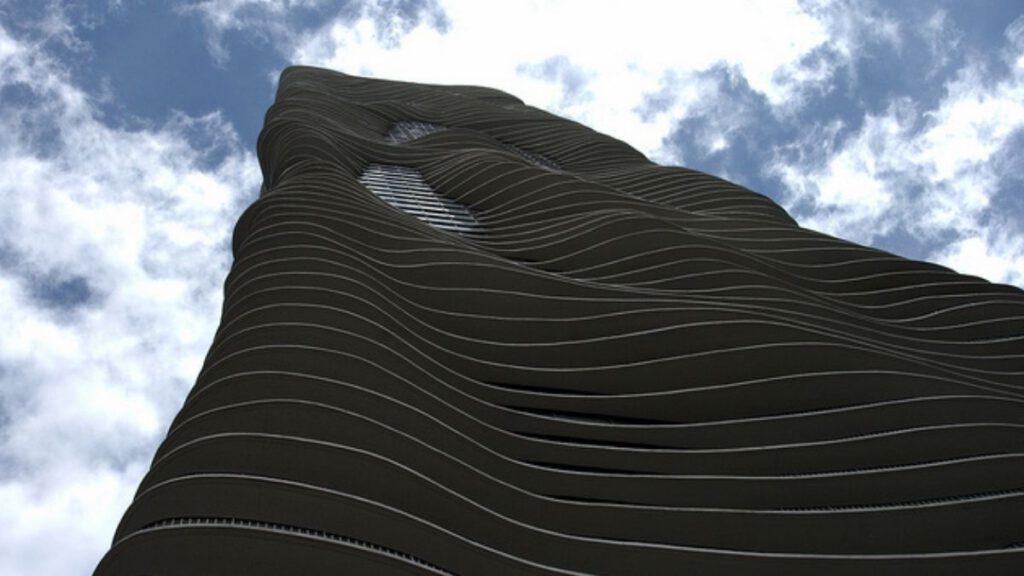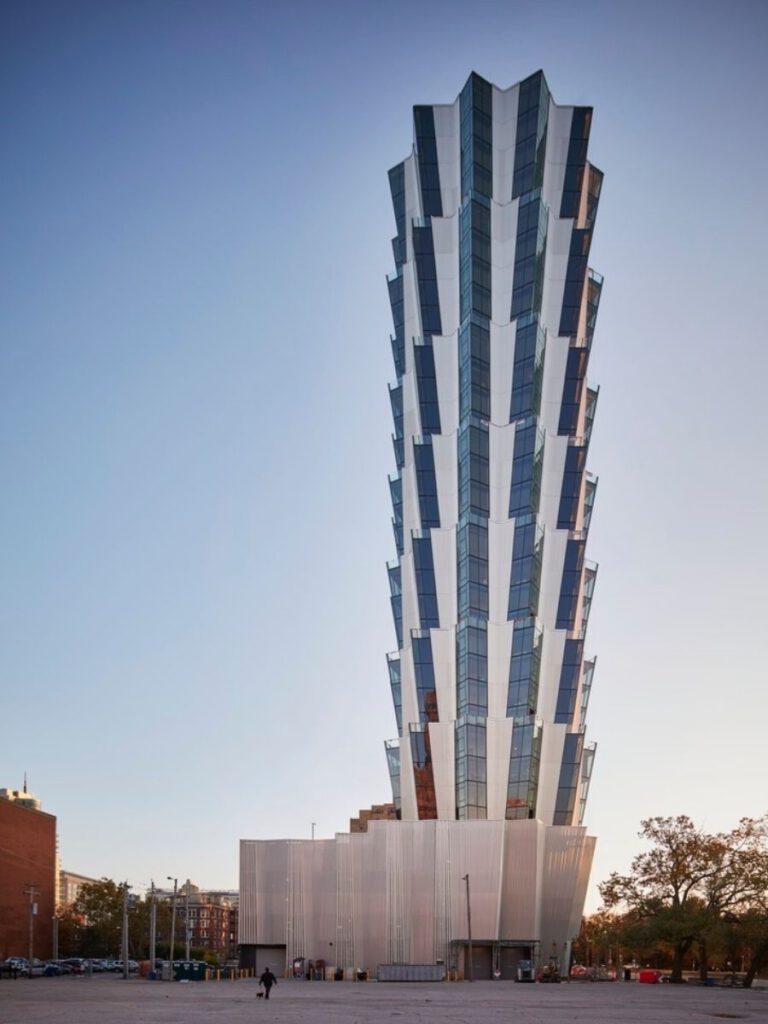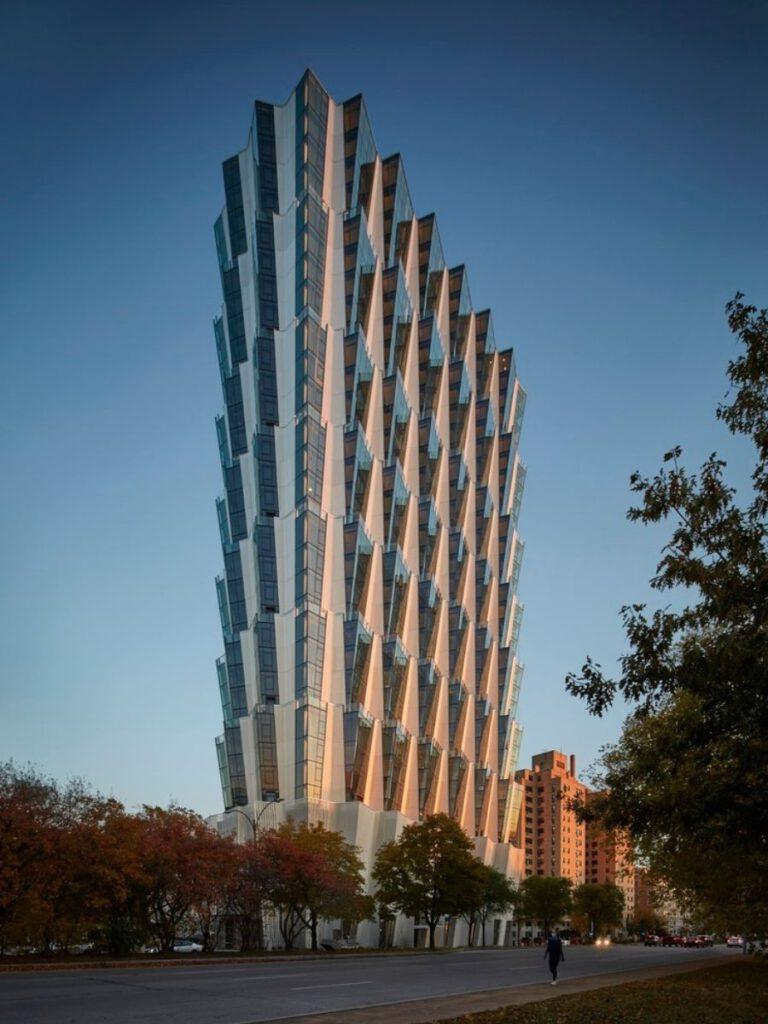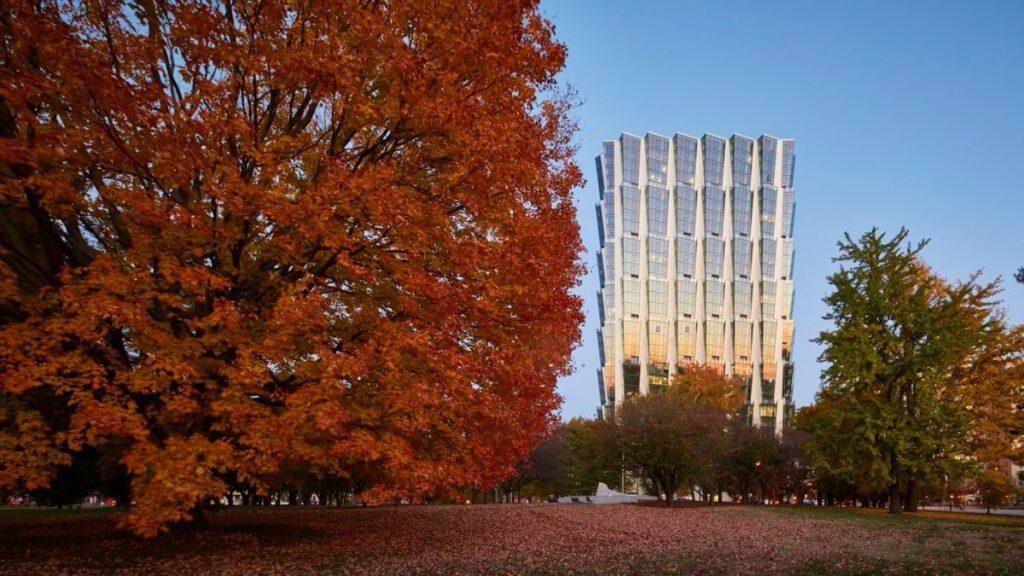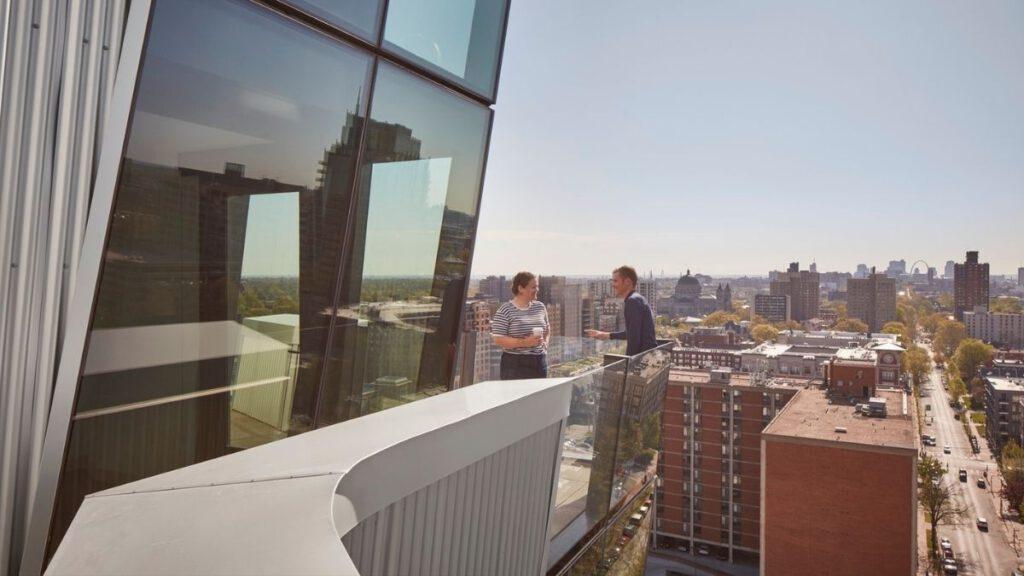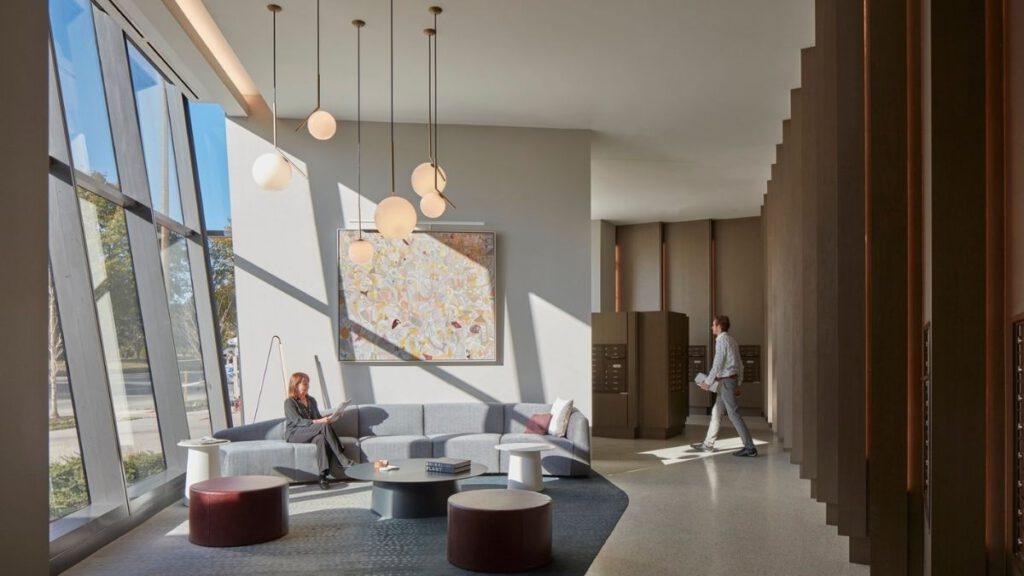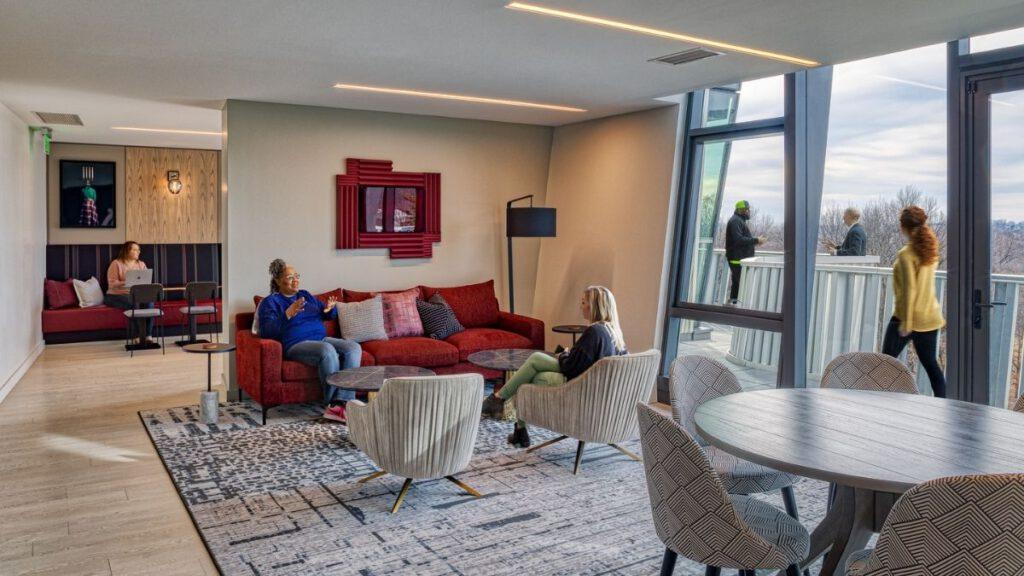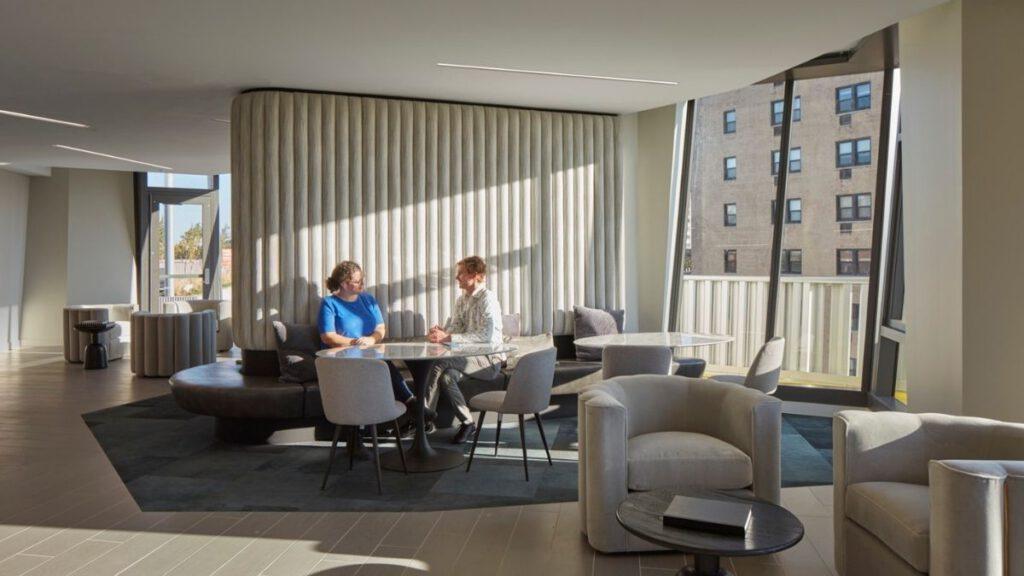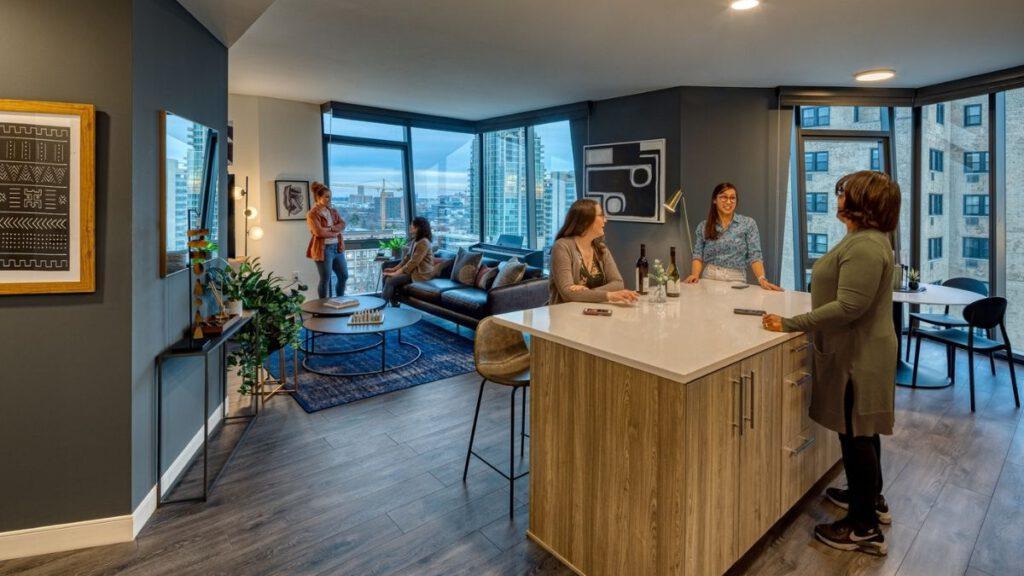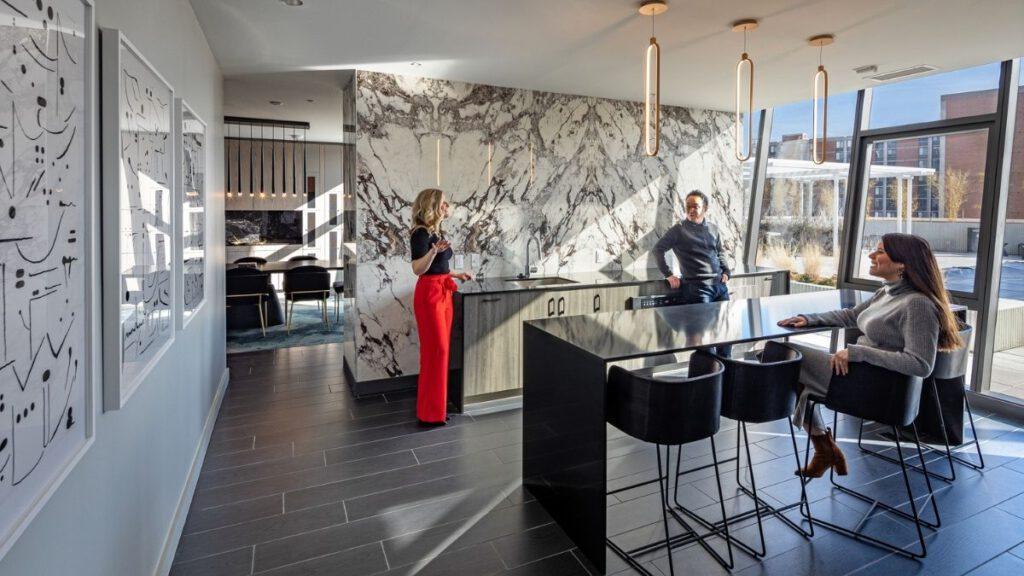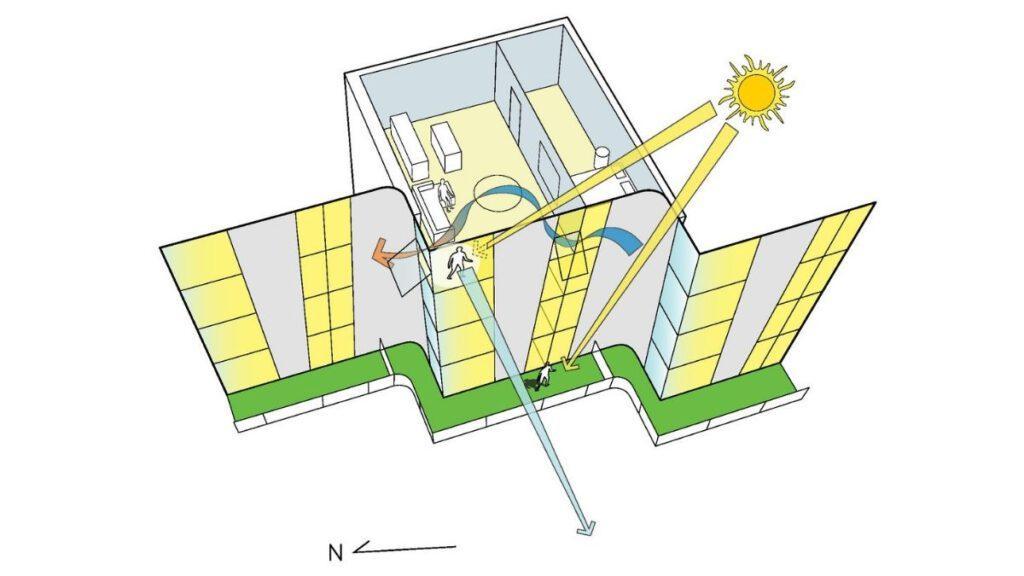A striking slant
Residential tower One Hundred in St. Louis was designed by renowned Chicago architecture firm Studio Gang. The architects are notorious for the striking exteriors of their high-rise buildings.
Admittedly, the sight takes some getting used to. Old and new come together as a seemingly irreconcilable pair of opposites. And then somehow they manage to create a beautifully composed symphony. After all, this “residential tower” – a term that seems almost inappropriate given the unusual shape – does bear the signature of renowned US architecture firm Studio Gang. And its experts put more than just a little thought into planning the project.
One Hundred: in line with the solar carving principle
The building is taller than most others in the neighbourhood. Its fluted tiers create the appearance of a shell. Or maybe a spaceship. With a dynamic exterior structure featuring a transparent curtain wall of aluminium components, it was designed by the legendary Studio Gang Architects. One Hundred is their first work in St. Louis, Missouri.
The new residential skyscraper joins a series of buildings for which Studio founder and MacArthur Fellow Jeanne Gang coined the term “solar carving”.
Light and shadow have always been a source of both problems and solutions in architecture. The architecture firm has recognized the ecological and spatial significance of “solar design” and is developing and perfecting the shape of buildings. Their aim is to firstly make maximum use of sunlight in every respect and secondly enhance the social dimension of buildings.
Optimum angles and inclinations
Solar carving works for all types of buildings, the firm says. Examples include the mixed-use Aqua Tower in Chicago, which also houses a hotel; the residential project Solstice on the Park, also in Chicago; the office tower 40 Tenth Avenue in New York; and now also the One Hundred in St. Louis. All of these innovative designs show how facades can be designed in a modern and new way to create social space as well.
For example, the facade surfaces on Solstice on the Park are perfectly angled for the latitude of Chicago. The recessed windows on the south wall are inclined by 72 degrees. This ensures maximum solar radiation in winter, also for passive heating. In summer, on the other hand, light and heat gain are automatically reduced. At the same time, the sloping walls reflect the nearby park and daily life through the glass and aluminium facades.
Axis with the famous Gateway Arch of St. Louis
One Hundred achieves something similar. The building takes its name from its location on one of St. Louis’ main arteries, at 100 North Kingshighway Blvd. In close proximity to the old brick building Kindred Hospital St. Louis, the magnificent art deco hotel “The Royal Sonesta Chase Park Plaza” and the mansion-lined Lindell Boulevard.
Thanks to this location, residents enjoy one of the most impressive views in St. Louis. To the west, the building overlooks the rolling and expansive green space of Forest Park. To the east, it forms an almost direct axis with the famous Gateway Arch and downtown St. Louis.
Unique geometry: looks round – but isn’t
According to designer Juliane Wolf from Studio Gang, the Gateway Arch, the 190-metre-tall “Gateway to the West” inspired and influenced the firm’s choice of materials. This stainless steel monument designed in 1947 by Finnish-American architect Eero Saarinen is the tallest arch in the world and also the tallest building open to the public in Missouri.
One Hundred has a facade that is wonderfully dynamic, especially viewed from Forest Park, where the residential tower unfolds its strong visual presence. The pattern on the transparent curtain wall and the aluminium rain screen reinforce the impression that the building is “round”. The “aluminium slivers” dominate from the north, while the curtain wall makes the building appear more open and transparent from the south.
Jagged leaf floor plan
For the floor plan, the shape of a jagged leaf was chosen. Around the base of the building, which contains retail space, the anodized aluminium panels look like a string of connected Zs when viewed from above. Four storeys each form a unit, a “tier”, stacked along the height of the tower – each with sloping facade elements.
The huge plus for the 316 residential units: each apartment has its own corner living room with twice as much window space thanks to the fanned-out, overhanging glazed sections. Studio Gang already excelled at making every apartment a corner apartment in the Mira Tower in San Francisco. And the Studio Gang experts are also imaginative when it comes to refurbishments, as evidenced by the Powerhouse in Wisconsin.
What’s more, One Hundred’s sloping glass walls make the apartments appear larger. And each tier has generous outdoor spaces – about a quarter of the apartments have terraces. There are also communal areas on the green roofs, which are additionally intended to capture rainwater for irrigation and reduce rainwater run-off.
Exclusive One Hundred Club
The apartments themselves range from small studio apartments to larger units with three bedrooms. It’s not only the interiors with generous floor-to-ceiling glazing, modern furnishings with quartz stone countertops, stainless steel appliances and a bright, open floor plan that are proving popular.
The residents of “One Hundred Above the Park” also receive free access to the One Hundred Club. This offers exclusive partnerships and special offers with interesting businesses in St. Louis, such as Pilates Lab and Vin de Set Rooftop Bar & Bistro.
One Hundred has a total floor space of around 48,300 square metres and a height of 115 metres. 355 parking spaces at the corner of Kingshighway and West Pine, a dining room, a conference room, a swimming pool, a gym, a games room and a business lounge complete the picture.
One Hundred was realized by Chicago developer Mac Properties. Light and shadow as well as ventilation are part of the strategy to certify the building according to the LEED system of the U.S. Green Building Council.
Text: Linda Benkö
Photos/Renderings: Studio Gang, Tom Harris, Sam Fentress, wikipedia/Smithfl, wikipedia/Daniel Schwen
